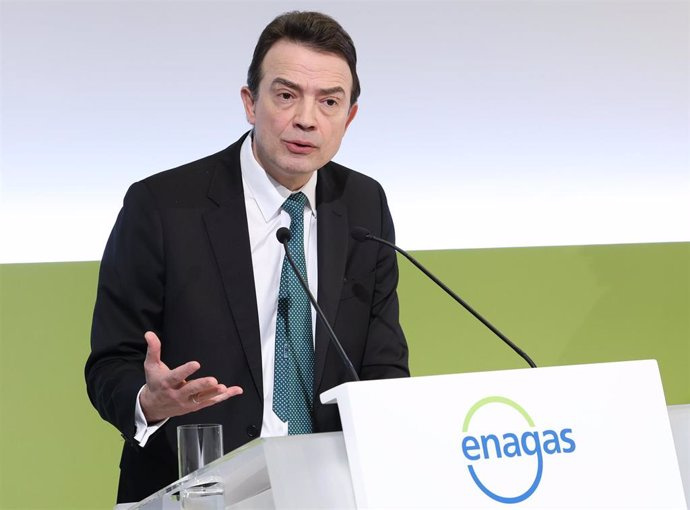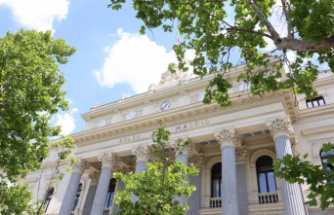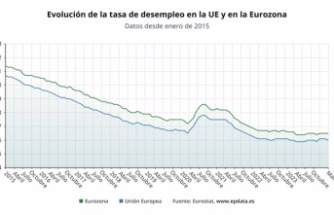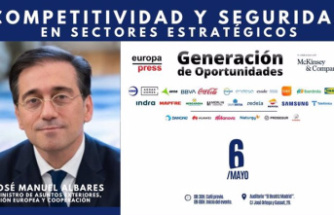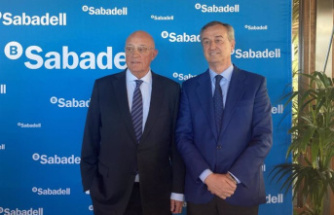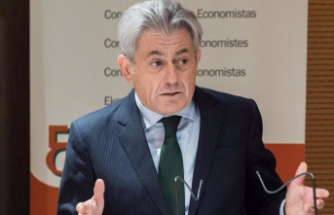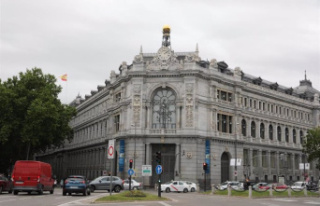Enagás obtained a net profit of 65.3 million euros in the first quarter of the year, which represents 19.5% more than in the same period last year, the company reported, adding that this result allows it to advance according to as planned to achieve the annual objective of profits in the range of 260-270 million euros.
Revenues reached 220.5 million euros between January and March, a figure in line with that of the first quarter of 2023, despite the impact of the regulatory framework, mainly due to the contribution of Copex investments and income from the Musel plant. E-Hub.
The gross operating result (Ebitda) of the group led by Arturo Gonzalo Aizpiri stood at 178.3 million euros at the end of March, with an increase of 2.7%, thanks to the intensification of the efficiency and control plan. operating expenses, which as of March 31st remained stable compared to the same date of the previous year.
The company highlighted that the results reflect "the high degree of execution" of its 2022-2030 Strategic Plan in its three axes: the investment plan to contribute to the decarbonization and energy security of Spain and Europe, the control of operating and financial costs, and the progress in the renewable hydrogen calendar.
For the whole of 2024, the group foresees a net profit of between 260 and 270 million euros, an Ebitda of around 750-760 million euros, a net debt of around 3,400 million euros and a dividend of 1 euro per share. .
Funds from operations (FFO) at the end of March increased from the 81.6 million euros recorded at the end of the first quarter of 2023 to 163.3 million euros, a figure that includes 40.9 million euros of dividends from subsidiaries . The FFO for the first quarter of last year included the payment of capital gains tax on the sale of GNL Quintero of 67.5 million euros.
As of March 31, Enagás' net debt stood at 3,342 million euros - a figure similar to that of 2023 and with the expectation of maintaining a stable debt at the end of the 2024 financial year - and is covered at a fixed rate in more than 80%, which mitigates the impact of interest rate volatility.
Meanwhile, the financial cost of the gross debt is 2.8% and the debt has an average life of around five years, after successfully closing on January 15 a bond issue of 600 million euros, maturing in 2034.
Enagás has leverage ratios compatible with a 'BBB' credit rating and presents a solid liquidity situation, which at the end of the quarter amounted to 3,131 million euros. Recently, Moody's has raised the outlook for Enagás' rating to 'stable', maintaining the rating at 'Baa2'.
The group has reached milestones in its strategy such as the final investment decision (FID) and the closing of financing, by the Hanseatic Energy Hub (HEH) consortium, to build Germany's first onshore liquefied gas terminal (Stade LNG), of which Enagás will be the operator and in which in March it increased its participation from 10% to 15%.
The estimated investment in the construction of the terminal, which will enter into commercial operation in 2027 and which will be the first adapted for green ammonia, is approximately 1,000 million euros - with a total planned investment of 1,600 million euros.
ADVANCES ITS RENEWABLE HYDROGEN STRATEGY.
In other of its major strategic bets, such as renewable hydrogen, Enagás has also seen progress in the calendar with the approval, in January, by Parliament of Royal Decree-Law 8/2023, of December 27, by which designates Enagás as provisional manager of the core network and, in February, with the Government's approval of the Draft Law for the reestablishment of the National Energy Commission (CNE), which contemplates new functions for the regulation of the sector of hydrogen.
Likewise, this April, the European Commission published the final list of Projects of Common Interest (PCI), which includes all the projects presented by Enagás: the H2Med corridor, the first axes of the Spanish Hydrogen Backbone Network and two underground storages. of hydrogen associated with the network.
The total gross estimate of investments included in the final PCI list in Spain is €5.9 billion, including the Spanish hydrogen infrastructure (€4.9 billion) and the H2Med project in Spain (€1 billion).
Also in April, the European Directive on Hydrogen and Decarbonized Gas Markets was approved, which has been accompanied by the announcement of the official opening of the window to request European funds from the Connecting Europe Facility (CEF-E) mechanism. Enagás will present its proposal to this call, which will open on April 30 and close on October 22.
Before April 30, it will make a proposal for a hydrogen backbone infrastructure for Spain to the Ministry for the Ecological Transition and the Demographic Challenge, with a ten-year horizon, as contemplated in Royal Decree-Law 8/2023.
Furthermore, throughout this year, the start of transposition of the European Directive on Hydrogen and Decarbonized Gas Markets and the approval of the final version of the National Integrated Energy and Climate Plan (PNIEC) are expected.
Regarding security of supply, in a quarter marked by international conflicts in the Middle East and Ukraine, Enagás highlighted that the Spanish gas system operated with 100% availability.
78% FILLING OF STORAGES AT THE END OF WINTER.
Spanish regasification plants received natural gas from nine different countries during the quarter and have more than 90% LNG storage contracted. The underground storages ended the winter at 78% full and have high interest, with 100% of the available capacity service contracted.
Likewise, in the first quarter the positive trend of industrial demand in Spain continues, with an increase of 8.4% to reach 47.6 terawatt hours (TWh), driven by the refining, chemical, pharmaceutical and cogeneration sectors. . Conventional demand - which includes industrial demand - grew by 2% in the first quarter of 2024.
Total demand decreased by 4% in the period from January to March, compared to the same period of the previous year, due to the drop in demand for gas for electricity generation of 24%, and the drop in domestic commercial demand of 10%. 3%, motivated by high temperatures in the winter months.

